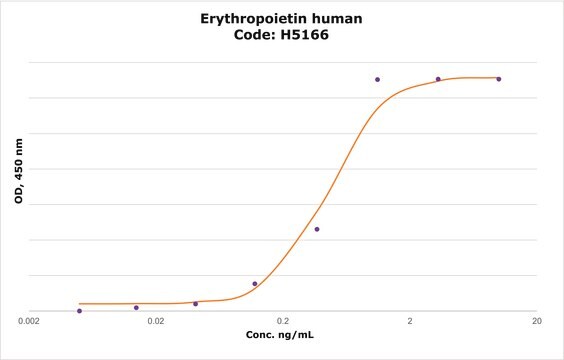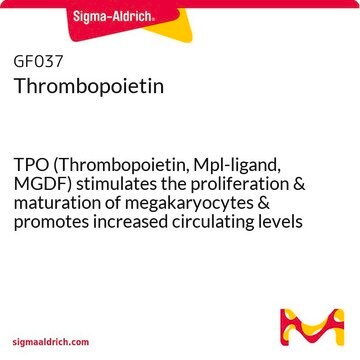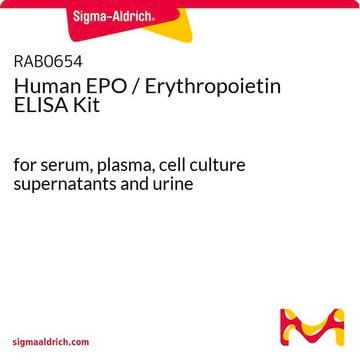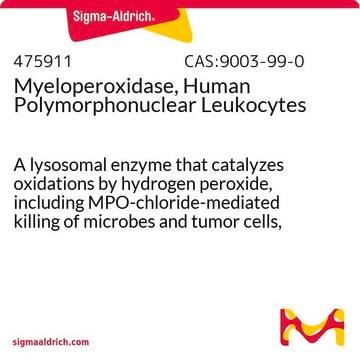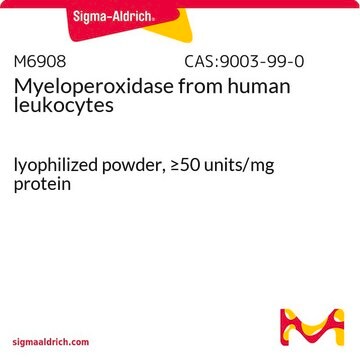SRP6158
EPO human
recombinant, expressed in HEK 293 cells, ≥95% (SDS-PAGE)
Sinonimo/i:
EP, EPO-alpha, Epoetin, Erythropoietin-alpha, MGC138142
Scegli un formato
696,00 €
Scegli un formato
About This Item
696,00 €
Prodotti consigliati
Origine biologica
human
Ricombinante
expressed in HEK 293 cells
Saggio
≥95% (SDS-PAGE)
Stato
lyophilized
PM
36 kDa (monomer, glycosylated)
Confezionamento
pkg of 10 μg
tecniche
cell culture | mammalian: suitable
N° accesso NCBI
N° accesso UniProt
Condizioni di spedizione
dry ice
Temperatura di conservazione
−70°C
Informazioni sul gene
human ... EPO(2056)
Descrizione generale
Applicazioni
- EPO (erythropoietin) has been used as a component of the culture medium for cardiac stem cells.[4]
- In cultured cerebellar granule cells and hippocampal neurons, it has been used to study effect of EPO on glutamate release.[5]
- It has also been used as a component of endothelial differentiation medium.[6]
Azioni biochim/fisiol
Stato fisico
Nota sulla preparazione
Ricostituzione
Codice della classe di stoccaggio
11 - Combustible Solids
Classe di pericolosità dell'acqua (WGK)
WGK 3
Punto d’infiammabilità (°F)
Not applicable
Punto d’infiammabilità (°C)
Not applicable
Scegli una delle versioni più recenti:
Certificati d'analisi (COA)
Non trovi la versione di tuo interesse?
Se hai bisogno di una versione specifica, puoi cercare il certificato tramite il numero di lotto.
Possiedi già questo prodotto?
I documenti relativi ai prodotti acquistati recentemente sono disponibili nell’Archivio dei documenti.
I clienti hanno visto anche
Filtri attivi
Il team dei nostri ricercatori vanta grande esperienza in tutte le aree della ricerca quali Life Science, scienza dei materiali, sintesi chimica, cromatografia, discipline analitiche, ecc..
Contatta l'Assistenza Tecnica.